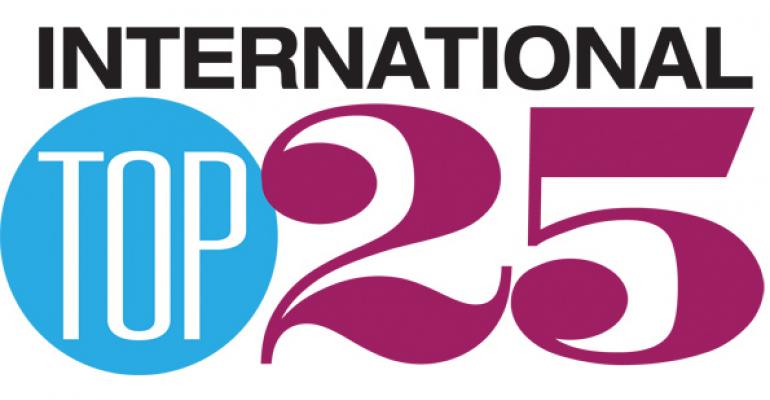Data
• Chains by sales, growth
• Chains by worldwide units, growth
• Companies by sales, growth
• Chains by estimated sales per unit
Not surprisingly, Brazilian and Mexican players lead the way in Latin America, led by the uniquely Brazilian Habib’s, a low-priced chain specializing in esfihas, a meat-filled pastry ubiquitous in Brazil and based on similar pastries found in the Middle East. Habib’s has been called the largest chain specializing in Middle Eastern cuisine anywhere on Earth, a testament to the diversity of Brazilian society, which is home to sizable Lebanese and Syrian immigrant communities. Offering as many or as few of the small pastries as desired, the chain possesses the vital ability to play at very low price points, a crucial strategy in a region where low-income consumers still account for a major portion of demand.
One of the distinguishing factors of the most successful local chains in Latin America is strong strategic diversity, allowing them to compete across multiple consumer groups, often through a combination of effective outlet and menu segmentation. Another Brazilian player, hamburger chain Bob’s, has achieved impressive growth by hewing closely to a template first laid down by McDonald’s, using satellite kiosk outlets to complement nearby traditional units. Offering low-priced, impulse items like ice cream and beverages, kiosks allow better penetration into high-traffic areas where space is at a premium, while also allowing a chain to target low-income consumers, who thanks to rising disposable incomes are eager to spend, yet often remain price-constrained.

As they have in Asia, convenience stores have also prospered, led by Mexico’s mammoth OXXO chain, operated by FEMSA, one of the world’s largest Coca-Cola bottlers. With more than 10,000 outlets across Mexico, OXXO has emerged as a clean, modern alternative to traditional corner shops, offering a wider selection and better quality, providing a chain foodservice experience in areas where chain penetration is still limited. The story of chain expansion in Latin America is often less one of creating an eating-out market and much more one of providing an alternative to a thriving existing culture. Both Mexico and Brazil are home to hundreds of thousands of street vendors, small bars, and corner bakeries offering light meals and coffee all across Latin America. Eating on-the-go is relatively well-established, with the advantage for chains often coming in terms of the experience provided. Starbucks, for instance, has no shortage of competitors in Latin America, with good coffee widely available in markets like Argentina and Brazil, yet the appeal of modern interiors, free Wi-Fi, and upscale appeal is a strong one, fuelling brisk expansion.

A trend to watch going forward is the increasing confidence of local franchise partners, with many now building their own portfolio of brands alongside licensed international concepts. Leading the way in this regard is Alsea, a Mexican company that operates Burger King, PF Chang’s, Starbuck’s and other concepts across Mexico and Latin America. The company’s recent purchase of Vips, Mexico’s largest casual-dining chain, reveals a growing willingness to expand into locally-focused categories not served by international players. Not to be outdone, in 2014 FEMSA added to its powerful OXXO brand with the purchase of popular Mexican food chain Gorditas Doña Tota, a fast food concept offering local specialties in a fast, modern environment. With so much of total dining out demand in Latin America still served by small local operators offering traditional dishes, a major investment push could have a powerful impact on competitive dynamics in the region. What’s more, it creates a potential dilemma for international operators reliant on the master franchisee model, as several of the largest and best-resourced partners are now becoming major branded players in their own right.





